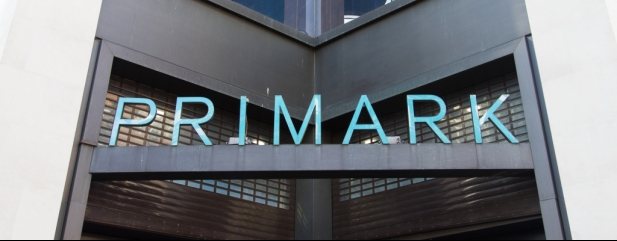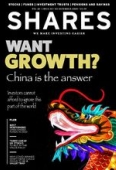Archived article
Please note that tax, investment, pension and ISA rules can change and the information and any views contained in this article may now be inaccurate.
Primark owner Associated British Foods is well placed for a recovery

Value looks to be back in fashion in more ways than one, and one of the best ways to play both investors’ and consumers’ eye for a bargain is through Primark owner Associated British Foods (ABF).

Market expectations for the company are subdued and it trades on an undemanding 12-month forward price to earnings ratio of 17.9.
But as the economy looks set to recover going into 2021 as coronavirus vaccines get rolled out and lockdown restrictions start to ease, ABF’s Primark business in particular – which accounts for two thirds of the company’s profit – appears to have numerous factors in its favour.
BULLISH ON PRIMARK
Even if the economic recovery isn’t as strong as expected Primark’s unique business model and market position mean it should do well as long as shops are open for business. That’s evidenced by its fourth quarter trading over the summer which ‘exceeded expectations’ as lockdown restrictions started to ease.
The troubles facing rivals like Debenhams and Topshop owner Arcadia should also benefit Primark, with their stores either set to close or shrink, strengthening its position on the high street.
While another tailwind for the business in the run-up to Christmas is the decision in England to allow shops to stay open day and night, running from Monday to Saturday, during December and January, with Primark saying it will keep 11 of its stores open 24 hours a day.

PRIMARK BUSINESS MODEL
Analysts at Berenberg believe something that helps set Primark apart is its unique business model, which is centred on a flexible, low-cost supply chain, the continuous release of new products, and store managers who are empowered to make localised decisions on product selection, merchandising and price.
‘As such, it has best-in-class sales densities (twice those of Next Retail), which in turn enable it to offer exceptional value and should allow it to take considerable offline market share,’ they say.
The company also has a strong balance sheet with liquidity of over £3.1 billion, and it is widely expected to be one of the first retailers to reinstate its dividend when the economy picks up again.

RISKS TO CONSIDER
It’s important to note there are risks with ABF surrounding any further restrictions that could be imposed, as evidenced by the £375 million sales hit it took as a result of the second England lockdown, with 57% of Primark’s total selling space temporarily shut down.
It’s also worth highlighting that one headwind for Primark is undoubtedly its lack of online capability. There is a Primark website with most of its products shown, but you cannot buy anything. This is one reason why the business trades on a lower multiple to some of its peers.
UNDERAPPRECIATED STRENGTHS
Analysts at Berenberg believe the market underestimates Primark’s ability to flourish in times of economic difficulty, and point out that during the global financial crisis, like-for-like growth ramped up from 1.8% in calendar year 2007 to 4.8%, 6.8% and 5.8% in each of the following three years as its low-priced products benefitted from consumers trading down during and after the global financial crisis.
They also believe Primark’s significant international roll-out opportunity is also underappreciated by the market.
Primark has stores outside of the UK in countries like Spain, Portugal, Germany and the Netherlands, and is also expanding in the US. In addition, it has opened stores in Slovenia and Poland as it looks to enter Central and Eastern Europe, a market coveted by companies like budget airline Wizz Air (WIZZ) for example because of its high growth potential.
NON-RETAIL ACTIVITY
There is also more to Associated British Foods than Primark, as its name suggests, with the group offering important diversification of revenue and earnings through its foods business, which includes brands like Jordans, Ryvita and Twinings, and makes ABF the world’s second largest producer of sugar and baker’s yeast.
ABF generates around half of its revenue and roughly a third of its profit from its four food businesses, with all of them having increased profits in the year to September 2020 despite the pandemic.
Berenberg expects ABF’s sugar business to continue its recovery in 2021 – the division had a bad time in 2019 as a result of the end of the EU sugar regime in 2017 and resulting fall in sugar prices – with one-off headwinds for its Illovo sugar brand now over and average sugar prices rising across Europe.
It also expects ABF’s Twinings Ovaltine drinks business to continue to outgrow the other elements of the grocery division, which should help drive mix-related profit margin improvement in that business.
Overall, the analysts see ABF’s food businesses growing at a 10% compound annual growth rate between 2019 and 2022.
Important information:
These articles are provided by Shares magazine which is published by AJ Bell Media, a part of AJ Bell. Shares is not written by AJ Bell.
Shares is provided for your general information and use and is not a personal recommendation to invest. It is not intended to be relied upon by you in making or not making any investment decisions. The investments referred to in these articles will not be suitable for all investors. If in doubt please seek appropriate independent financial advice.
Investors acting on the information in these articles do so at their own risk and AJ Bell Media and its staff do not accept liability for losses suffered by investors as a result of their investment decisions.
Issue contents
Editor's View
First-time Investor
Great Ideas
- 122% in four months: This stunning run for The Panoply should continue
- Primark owner Associated British Foods is well placed for a recovery
- Aviva chief delivers on promise to add shareholder value
- Big transactions at Pets at Home following first half results
- Cheap access to a hot style with a 4.9% yield
Money Matters
News
- Investors warned of tracker flip risk ahead of Tesla’s S&P 500 entry
- Here’s why gold has sold off, copper has rallied and oil remains volatile
- Hipgnosis benefits from change in valuation method
- The companies eyeing Arcadia assets after collapse
- Kingspan ESG credentials clouded by Grenfell inquiry
- Life sciences industry veteran David Evans launches new investment company
- Consequences of the pound rally on certain UK stocks
- Fabric coating Covid killer HeiQ to join UK stock market

 magazine
magazine








